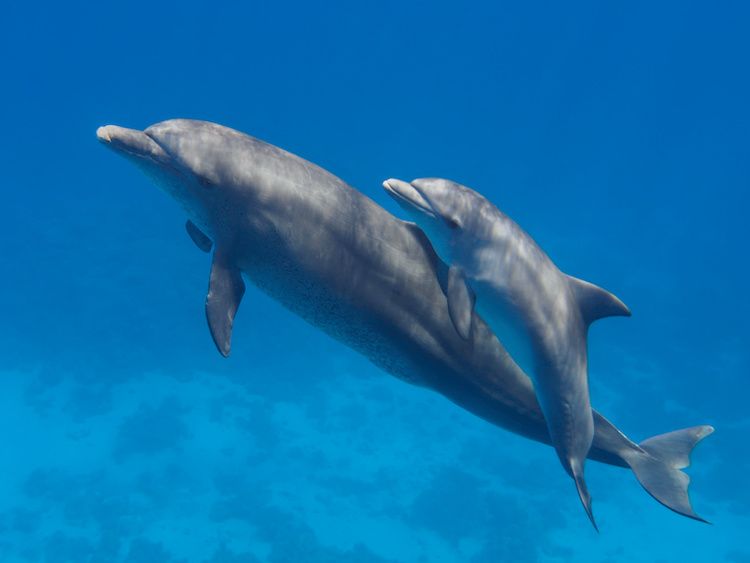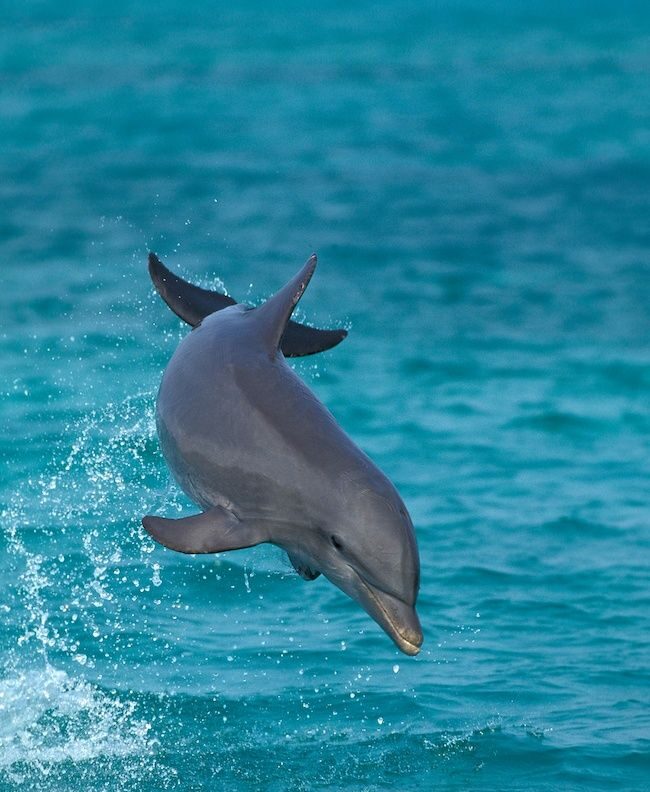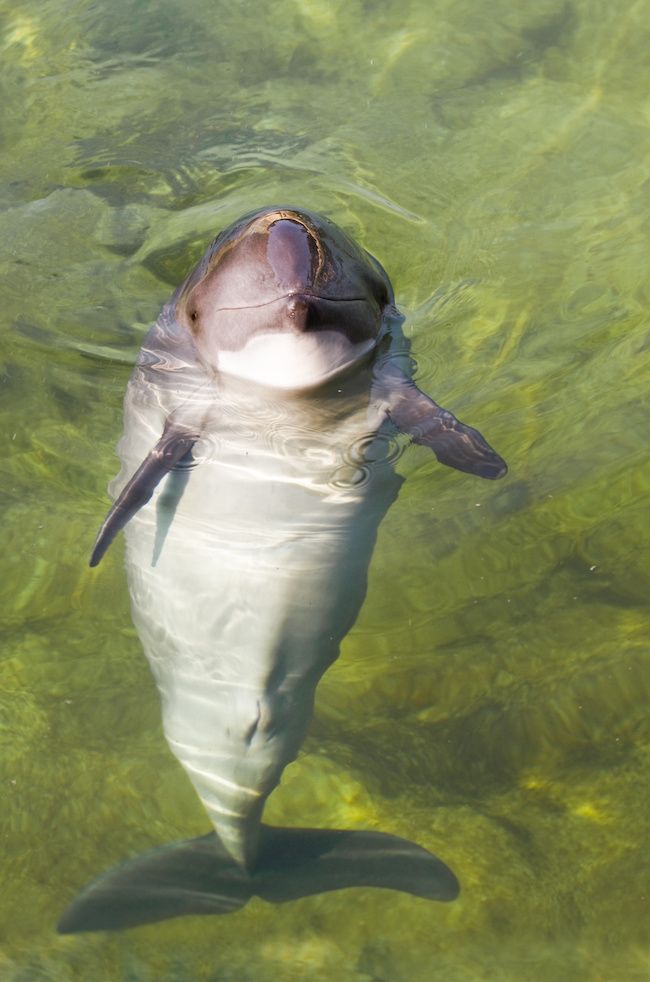
The world of marine mammals is fascinating, and among them, porpoises and dolphins are two species often confused. However, despite their similarities, they have many specific characteristics that allow for differentiation. In this article, we will explore in detail the differences between these two animals in terms of their physical features, behavior, and habitat.
Anatomy and Appearance
Porpoises and dolphins have different morphologies, including body shapes and fins that vary. Porpoises have a robust body and a rounded head without a prominent rostrum. Their dorsal fins are triangular and relatively small. Additionally, these animals typically have coats in shades of gray.
On the other hand, dolphins have a streamlined and slender body, along with a head with a pointed rostrum. Their dorsal fin is curved or crescent-shaped, contributing to the impression of dynamism in the water. Furthermore, the color of their skin can vary widely, from light gray to intense black, including the characteristic black and white pattern of some species.
Dentition
Another important element to distinguish porpoises from dolphins is their dentition. Porpoises have flattened, spatula-shaped teeth, while dolphins have conical and pointed teeth. This difference affects the feeding habits of these animals, as they primarily consume fish and cephalopods.
- Also, check out our article: How long can a dolphin stay underwater?

Behavior
The differences between porpoises and dolphins go beyond their physical characteristics; they also exhibit distinct behaviors. Porpoises are discreet and shy, making them challenging to observe in their natural environment. They often swim alone or in small groups and generally avoid contact with humans. Their mode of communication is more subdued than that of dolphins, relying more on low-frequency sounds that are less audible to us.
In contrast, dolphins are known for being social and curious. They live in groups called “pods” and enjoy interacting with other species, including humans. Additionally, dolphins are highly active and love to play, jump out of the water, or perform acrobatics. In terms of communication, they emit a wide range of sounds (including the famous “clicks”), as well as visual and tactile signals.
Intelligence
It’s worth noting that dolphins are renowned for their high intelligence and have been the subject of numerous scientific studies. They can solve complex problems, learn quickly, and cooperate with each other for hunting or defense. Porpoises are also intelligent but have been less studied to date.

Habitat and Distribution
Porpoises and dolphins have overlapping distribution areas, but they nevertheless exhibit distinct habitat preferences. Porpoises primarily inhabit cold or temperate coastal waters, where they find an abundance of food. They are notably present in the North Atlantic, the North Sea, and around the British Isles.
On the other hand, dolphins live in more diverse environments, ranging from tropical zones to polar regions. Although they can also be observed along the coasts, several dolphin species have a pelagic distribution, meaning they inhabit offshore areas, far from land. Additionally, some freshwater dolphins, like the Amazon river dolphin, inhabit large rivers and lakes.
Threats and Conservation
Porpoises and dolphins face common threats primarily related to human activities: marine pollution, accidental entanglement in fishing nets, collisions with ships, and habitat degradation. The preservation of these marine mammals is essential for maintaining biodiversity and the balance of ecosystems. Protective measures have been implemented, such as the creation of marine protected areas and the regulation of certain fishing practices.
In conclusion, while porpoises and dolphins share several common traits, they also have notable differences that allow for identification and a better understanding of the diversity of the marine world.